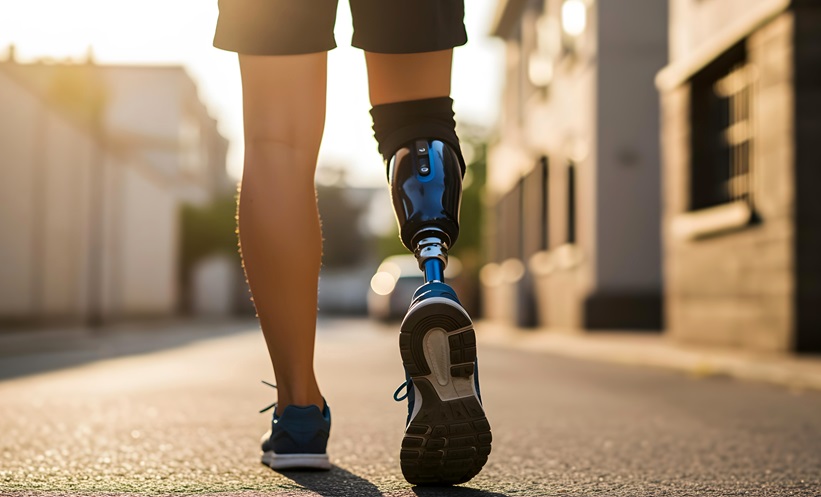NEUROPROSTHESES may hold the potential to assist patients with post-stroke disabilities after a 64-year-old man received a surgical implant and experienced significant improvement in walking ability following a haemorrhagic stroke.
Researchers at the Louis Stokes Cleveland VA Medical Center, Cleveland, Ohio, USA, reported on the improved walking speed and distance of a patient who received a neuroprosthesis consisting of an implanted pulse generator and intramuscular stimulating electrodes in seven muscles of the hip, knee, and ankle.
Following several months of extensive training after the surgery, the patient was able to walk at a speed of 0.72 metres per second (m/s) when the stimulating electrodes were turned on to activate targeted muscles. This improved upon the 0.29 m/s walking speed recorded before surgery was carried out after a haemorrhagic stroke impaired the motion of the patient’s leg. The researchers also noted a more “symmetrical and dynamic” manner of walking after the implant.
Prior to the surgery the patient was measured as being able to walk only 76 m before becoming fatigued. After receiving training while the stimulating electrodes were switched off the patient could walk about 300 m in 16 minutes. With the electrodes switched on the maximum walking distance was increased to >1,400 m in 41 minutes. “Thus his walking distances increased by 370% with stimulation while walking nearly twice as fast,” the researchers explained.
Without the use of stimulation, the patient’s walking ability in daily life had improved significantly after spending time using the neuroprosthesis and the muscle conditioning during stimulated exercise and training. “Persistent use of the device during walking may provide ongoing training that maintains both muscle conditioning and cardiovascular health,” the researchers commented, while also being careful to note that the wider applicability of the research would first need to be proven through future large-scale studies. With further research and technical refinements, however, the team believe that “daily use of an implanted system could have significant clinical relevance to a portion of the stroke population.”
(Image: freeimages.com)







